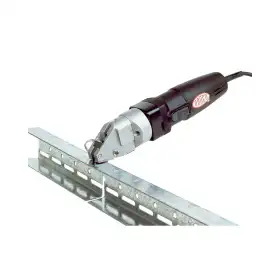Perfect Bending Wuko Bender Techniques for Precise Pipe Shaping

Achieving perfect bending in sheet metal requires precise control and reliable tools. The WUKO bender stands out by offering high-quality, durable equipment designed to handle various bending needs, from straight edges to complex curves. Its robust design and adjustable support plates enable clean, accurate bends without damaging the material, making it a top choice for metalworkers.The WUKO bender is built to manage both inner and outer curves as well as straight bends, offering flexibility across different projects. It features swivel joints, roller stops, and angled bending wheels that help prevent scratches and ensure consistent results, even on coated or delicate sheets. This combination of features delivers professional-level bending performance.Because of its versatility and ease of use, the WUKO bender suits a wide range of trades, including HVAC, roofing, and sheet metal fabrication. Users appreciate its capacity to produce bends from 0° up to 90°, making it efficient for both simple and complex metal shaping tasks.
Perfect Bending Techniques With WUKO Bender
Mastering bending techniques requires both the right tools and an understanding of their capabilities. The WUKO bender provides precise control through its design, supported by best practices suited for different materials and bending demands.
How WUKO Bender Ensures Precision Bends
The WUKO bender uses a system of rollers and levers that multiply force, enabling smooth, uniform bends without deformation. Its robust construction reduces the risk of material damage, maintaining clean edges and consistent angles.It features adjustable roller stops and swivel joints, allowing users to lock in exact angles or handle curves on both inner and outer bends. This setup improves stability and repeatability, crucial for achieving precise results. The bender also accommodates spring-back materials by allowing extra bend degrees, ensuring the final angle holds.
Best Practices for Achieving Perfect Bends
Consistent results come from preparation and technique. Users should always measure and mark bend lines clearly before starting. Aligning the material correctly in the bender ensures the force is evenly applied, minimizing distortion.Using slow, controlled pressure during bending helps prevent cracking and surface damage, especially on coated or delicate metals. When working with longer pieces, support the material to avoid sagging. Checking the bend angle periodically with a protractor or angle gauge leads to precision.Lubrication is recommended on the rollers for smooth operation, especially when bending softer metals like copper or aluminum.
Material Compatibility and Limitations
The WUKO bender works best with sheet metals including steel, copper, aluminum, and zinc. Its maximum bending depth typically reaches 8 inches, with a minimum of about 3/8 inch thickness, depending on the model.While capable of up to 90° bends, materials with high spring-back or very thick gauge may require extra passes or specialized techniques. Coated or color-coated panels benefit from WUKO’s design that reduces scratches during bending.Users should avoid applying excessive force beyond the tool’s specifications to prevent damage to both the tool and the material. Knowing the limits of each sheet metal type ensures the best bending outcome.
Choosing and Maintaining a WUKO Bender
Selecting the proper WUKO bender depends on the type of materials and bending requirements. Regular maintenance is essential to keep the tool precise and durable over time.
Selecting the Right WUKO Bender Model
The choice of a WUKO bender model should be based on material thickness, bending angle, and project type. For example, the WUKO 2204 handles metals like steel and aluminum up to 90° bends with an 8-inch bending depth.Users should consider features such as the ability to bend straight or curved panels, compatibility with material coatings, and the length of bend radius needed. Some models, like the Uber Bender 7200, offer extra bending angles and protection for delicate finishes.Pricing, warranty, and user reviews are additional factors that help determine the best fit. A cost-effective option that matches specific bending needs will reduce the risk of damage and improve efficiency.
Maintenance for Optimal Performance
Maintaining a WUKO bender involves regular cleaning to prevent debris buildup, especially on bending edges and guides. Lubrication of moving parts ensures smooth operation and reduces wear.Inspecting the tool for signs of damage or wear is crucial before each use. Components like locking mechanisms and hinges should be checked for proper function.Storing the bender in a dry environment helps avoid corrosion, particularly on stainless steel parts. When handled correctly, maintenance extends the life of the tool and maintains consistent bending accuracy.
- Art
- Causes
- Crafts
- Dance
- Drinks
- Film
- Fitness
- Food
- Games
- Gardening
- Health
- Home
- Literature
- Music
- Networking
- Other
- Party
- Religion
- Shopping
- Sports
- Theater
- Wellness


